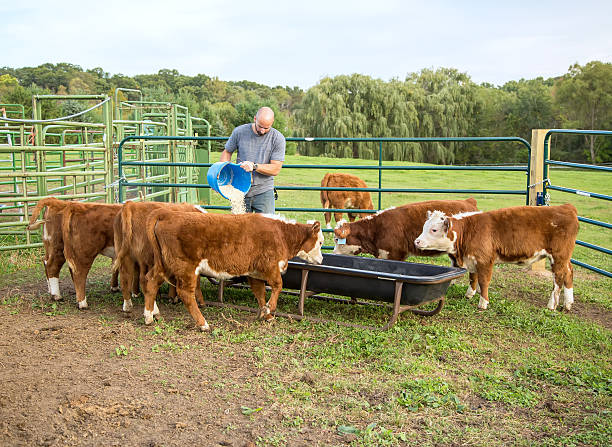Cattle creep feeders play a crucial role in livestock management, ensuring young animals receive adequate nutrition without competition from adult cattle. These specialized feeding systems are designed to provide supplemental feed exclusively to calves, helping them gain weight faster and transition smoothly into adulthood. Similarly, sheep creep feeders serve the same purpose for lambs, allowing them to access nutrient-rich feed while preventing adult sheep from consuming it.
Understanding Cattle Creep Feeders
A cattle creep feeder is a feeding system designed specifically for young calves. It features an enclosure with openings that only calves can fit through, keeping adult cattle out. This setup ensures that calves receive additional feed without interference, supporting their growth and development. The design of these feeders varies, but the fundamental purpose remains the same—providing an efficient way to supplement the diet of young animals.
Sheep creep feeders function similarly, offering lambs access to high-quality feed without competition. Both types of feeders help improve weight gain, reduce stress on young animals, and encourage early rumen development, which is essential for healthy digestion.
The Importance of Cattle Creep Feeders in Livestock Management
Proper nutrition is critical in the early stages of an animal’s life. Young calves require additional energy and protein to grow at an optimal rate. Without a controlled feeding system, they might struggle to compete with adult cattle for food, leading to slower growth and weaker immunity. Cattle creep feeders solve this problem by providing a dedicated feeding area for calves.
Sheep creep feeders work in the same way, ensuring that lambs receive the nutrition they need to thrive. By allowing young animals to feed separately, farmers can monitor their intake more effectively, adjust feeding strategies as needed, and ensure consistent weight gain across the herd.
How Cattle Creep Feeders Support Growth and Development
Calves go through rapid growth phases, requiring a well-balanced diet rich in essential nutrients. Cattle creep feeders allow them to access specially formulated feed that enhances their development. This setup prevents weaker calves from being outcompeted by stronger ones, ensuring even growth rates.
Sheep creep feeders offer similar advantages for lambs. They help farmers introduce grain-based feeds early, promoting efficient weight gain and preparing lambs for eventual weaning. This method reduces stress on young animals, allowing them to adapt more easily to independent feeding.
Where to Place Cattle Creep Feeders for Maximum Efficiency
The strategic placement of cattle creep feeders plays a vital role in their effectiveness. They should be positioned in areas where calves frequently gather, such as near water sources or shaded locations. This encourages regular use and ensures that all calves benefit from the additional nutrition.
Sheep creep feeders should also be placed in convenient locations that lambs can easily access. Keeping them in dry, sheltered areas protects the feed from spoilage and encourages consistent consumption. Placement matters, as it directly affects how often young animals use the feeders and how well they grow.
Managing Cattle Creep Feeders for Optimal Results
Successful livestock feeding requires careful management. Farmers need to monitor feed levels regularly, ensuring that the right amount is available for young animals without excess waste. Adjusting the feed type based on growth stages ensures that calves and lambs receive the right balance of nutrients.
Sheep creep feeders require similar attention, with farmers checking for contamination, adjusting rations, and ensuring lambs are eating properly. Regular maintenance of both cattle creep feeders and sheep creep feeders extends their lifespan and improves efficiency.
Conclusion
Cattle creep feeders and sheep creep feeders play a significant role in livestock growth by ensuring that young animals receive the nutrition they need without competition from adults. These specialized feeding systems contribute to healthy weight gain, stronger immune systems, and improved overall productivity. With proper placement and management, farmers can maximize the benefits of these feeders, ensuring their livestock thrives.

